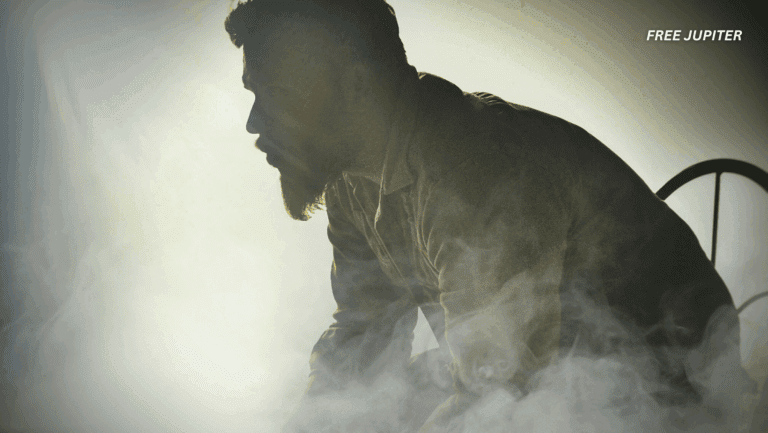Friendly Note: FreeJupiter.com shares general info for curious minds 🌟 Please fact-check all claims—and always check health matters with a professional 💙
Crows have long been creatures of fascination and mystery, often entwined with human myths about death and the afterlife. Known collectively as a “murder of crows,” these birds have inspired tales of dark omens and eerie gatherings. Yet, modern scientific research reveals that their behavior around death is far more complex, nuanced, and rooted in survival than superstition. This article delves deeply into the intriguing world of crow “funerals,” uncovering what these gatherings truly signify, the science behind them, and the remarkable cognitive abilities that drive these behaviors.
The Myth and Reality of Crow Funerals
The image of crows assembling around a dead companion has been a staple of folklore, often interpreted as a grim council deciding the fate of the deceased. While this poetic idea captures the imagination, the reality is grounded in practical and adaptive behavior. When a crow dies, it is common for other crows to gather near the body, but their purpose is not to mourn in a human sense. Instead, these gatherings serve as a form of communal investigation and information sharing.
This behavior falls under the scientific study known as corvid thanatology—a field that combines the study of corvid birds (crows, ravens, magpies, and jays) with thanatology, the study of death and the rituals surrounding it. Corvids are renowned for their intelligence, and their responses to death reveal a sophisticated understanding of risk and social dynamics.
What Happens During a Crow Funeral?
When a crow encounters a deceased member of its species, it often emits alarm calls or loud scolding sounds. These vocalizations act as signals that attract other crows to the site, resulting in a gathering sometimes referred to as a “mob.” This mobbing behavior can last anywhere from 15 to 20 minutes, during which the crows collectively vocalize and inspect the dead bird.
Unlike human funerals, which are largely ceremonial and emotional, crow funerals are functional. The birds use these gatherings to assess potential threats in their environment. By examining the circumstances of the death, crows can detect predators or dangers they need to avoid. This investigative process helps the group learn and adapt, increasing their chances of survival.
Read more: The Story Behind The Cat Who Walked Off the Titanic, And Lived
Cognitive Insights: What’s Happening in the Crow Brain?
Recent advances in neuroimaging have allowed scientists to peek inside the crow brain to understand how these birds process the sight of death. Using a technique called FDG-PET (fluorodeoxyglucose positron emission tomography), researchers studied brain activity in crows exposed to dead conspecifics compared to control stimuli, such as dead songbirds.
The findings were striking. Instead of activating brain regions associated with fear or social emotions—like the amygdala, which in mammals governs emotional responses—the crows showed increased activity in the nidopallium caudolaterale (NCL). This area is considered the avian equivalent of the human prefrontal cortex, responsible for higher-order decision-making and complex cognitive processing.
This suggests that crows approach death not with instinctual fear or grief but with analytical thought, evaluating the situation to inform future behavior. The brain’s executive center lights up as the crow contemplates the implications of the death, underscoring their reputation as one of the most intelligent bird species.
Social Learning and Threat Recognition
Crows do not just react to death passively; they actively learn from it. In a fascinating study, researchers wore masks while carrying taxidermied dead crows near feeding areas. The local crows quickly associated specific masked faces with danger, responding with alarm calls and mobbing behavior. Remarkably, this recognition persisted for up to six weeks, even when the masked individuals no longer carried dead birds.
This long-term memory and social learning demonstrate how crows use death-related cues to navigate their environment. They remember and avoid threats, modify their behavior accordingly, and warn others in their community. This ability to learn and communicate about danger is a testament to their complex social intelligence.
Unusual and Controversial Behaviors Observed
While most crow funerals involve vocalizations and cautious inspection, some behaviors can seem bizarre or unsettling. Research has documented instances where crows touch, peck, or even copulate with dead conspecifics. These acts, though rare, have been observed in controlled studies and documented over several years.
Such behaviors may appear macabre to human observers, but scientists caution against overinterpretation. These interactions could result from confusion during the breeding season, mistaken identity, or heightened arousal triggered by the presence of a dead bird. In some cases, a crow might approach a corpse while alarm calling, engage in copulation, and then be joined by its mate in a frenzy before tearing the body apart.
Though these actions are unusual, they highlight the complex and sometimes contradictory nature of crow behavior around death. Researchers emphasize that these are exceptions rather than the rule and that the primary function of crow funerals remains information gathering and threat assessment.
The Role of Communication in Crow Funerals
Crows are highly vocal birds with a rich repertoire of calls used to convey different messages. During funerals, alarm calls serve to recruit others to the scene and signal potential danger. Studies comparing brain responses to alarm calls and other social vocalizations, like begging calls, found that both types stimulate the NCL, indicating that interpreting crow communication requires significant cognitive effort.
This complexity suggests that crow communication is context-dependent and nuanced. The birds must interpret subtle differences in calls to respond appropriately, whether to threats, food opportunities, or social interactions. The funeral gatherings provide a setting where these communications are heightened and critical for group survival.
Broader Implications: What Crow Funerals Tell Us About Animal Intelligence
The study of crow funerals offers profound insights into animal cognition and social behavior. These birds demonstrate that death can be a catalyst for learning and community action rather than just a trigger for fear or avoidance. Their ability to remember faces, associate specific individuals with danger, and engage in collective investigation points to a level of intelligence that challenges traditional views of animal behavior.
Moreover, the fact that crows use higher-order brain functions when confronted with death suggests a form of awareness and problem-solving rarely attributed to non-human species. While it remains unclear whether crows experience emotions akin to human grief or empathy, their actions reflect a sophisticated approach to risk management and social cohesion.
Read more: Beautiful Moment ‘Cat Distribution System’ Brings New Kitty to Emotional Hiker Has People In Tears
Conclusion: A Dance of Death and Survival
Crows’ funerals are far more than eerie gatherings; they are dynamic events where intelligence, social learning, and survival instincts converge. These birds transform the presence of death into an opportunity for collective vigilance and adaptation. Through vocal alarms, memory, and brainpower, crows navigate the dangers of their world with remarkable acumen.
As research continues, our understanding of these behaviors will deepen, offering new perspectives on how animals perceive death and the social bonds that influence their responses. For now, the crow’s funeral stands as a testament to the complexity of life and death in the natural world—a ritual not of mourning, but of mindful survival.










